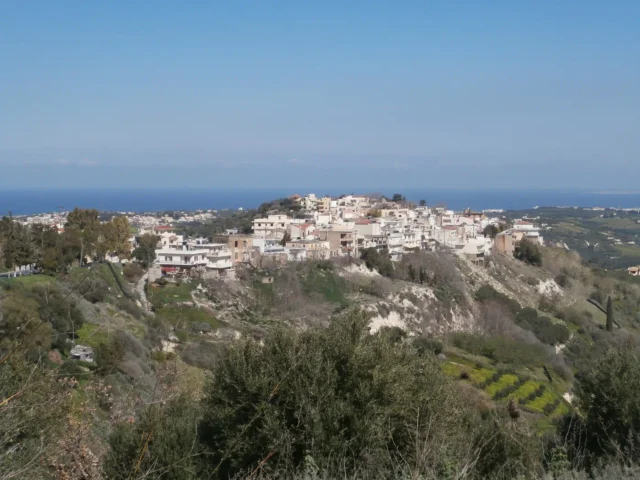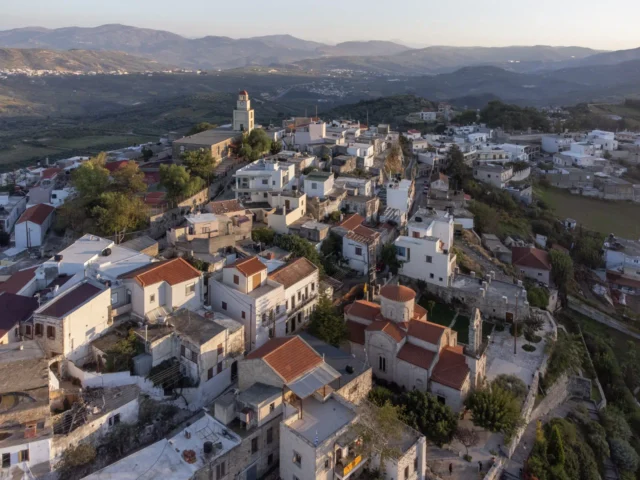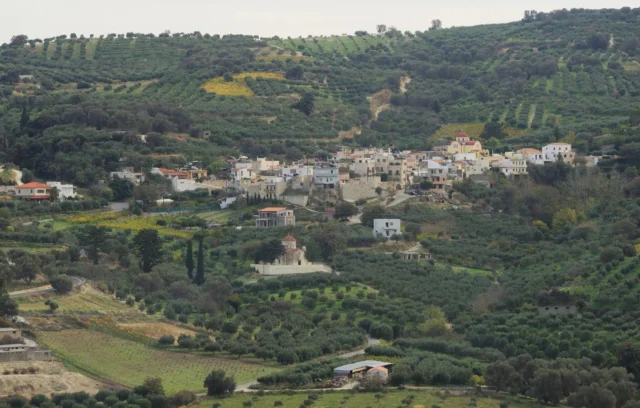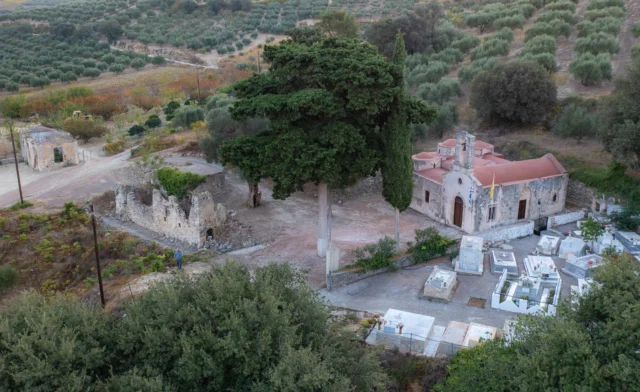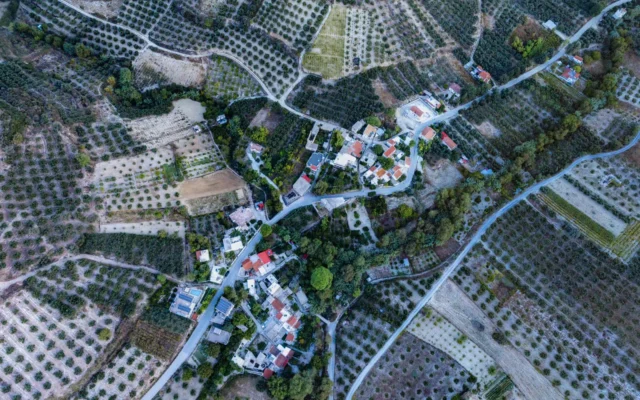Stavrakia (Greek: Σταυράκια) is a village located 13 kilometers south of Heraklion, Crete, situated on a hill at an altitude of 240 meters. It is near the Heraklion-Moires road and offers views of the surrounding landscape and the Heraklion Gulf. The village’s economy primarily relies on the production of sultana grapes, wine, and olive oil, with an increasing number of private businesses.
Village Life and Points of Interest
Stavrakia has several religious sites. The main churches include Agios Georgios (Saint George), who is the patron saint, Panagia-Zoodochos Pigi (Life-Giving Spring), Agios Nikolaos (Saint Nicholas), Agios Spyridon (Saint Spyridon), and the largest and most recent, the Anastasi tou Sotiros (Resurrection of the Savior). Additionally, there are two chapels: Agios Ioannis (Saint John) and Agios Panteleimon (Saint Pantaleon).
The village is served by an Agricultural Cooperative, a three-teacher Primary School, and a kindergarten. The central village square, which has been renovated, features a Heroes’ Monument commemorating locals who participated in national struggles.
Historical Context
The settlement of Stavrakia has a long history, with its first documented mention dating back to 1248 as casale Stavrachi. Originally existing as two separate settlements, Apano (Upper) and Kato (Lower) Stavrakia, they eventually merged. Throughout its history, Stavrakia played a role in various Cretan struggles for independence and endured periods of hardship and reconstruction. The Primary School was established in 1886 and has been in continuous operation.
Culture and Traditions
The cultural life in Stavrakia includes celebrations and community involvement. The village officially celebrates on the feast day of its patron saint, Agios Georgios. A traditional festival is also organized by the Cultural Association of Stavrakia for the feast of Agios Panteleimon. This Cultural Association, active since 1983, contributes significantly to the village’s cultural events and activities. It has also undertaken initiatives to honor the memory of villagers, such as producing a commemorative calendar.
Family and Social Life
Historical records provide glimpses into the family and social fabric of Stavrakia. For instance, a 1583 census categorized inhabitants by age and working capability, defining “elderly” as over 60 and “men for work” as aged 14 to 60. An Ottoman census in 1671 classified the population into wealthy, middle-class, and poor. The aftermath of events like the Greek Revolution of 1821 saw difficult living conditions and the loss of entire families. In the latter half of the 20th century, the absence of a local secondary school led many young students to move to Heraklion after primary education, impacting local demographics.
Modern Development and Administration
In recent decades, Stavrakia has seen improvements in its infrastructure, including the introduction of electricity around 1959-1960, completion of water supply and sewage networks, road paving, and the establishment of a biological wastewater treatment facility. Administratively, Stavrakia was officially recognized as the seat of its community in 1925 and currently belongs to the Municipality of Heraklion.
Settlement: Key Points
- Location: 13 km south of Heraklion, Crete, at 240m altitude.
- Historical Reference: First mentioned in documents from 1248.
- Key Features: Notable churches including Agios Georgios and Anastasi tou Sotiros, active Cultural Association, agricultural production (sultanas, wine, olive oil).
- Current Status: A village in the Municipality of Heraklion with developing local businesses and community facilities.
- Population Data:
References













